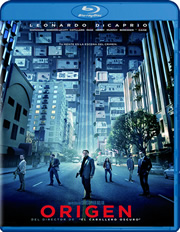Por cierto, tomado de la wikipedia, la explicación del porqué se tomó este formato panorámico para TVs, muy interesante pero Off-Topic total:
"Why 16:9 was chosen by the SMPTE
Equal area comparison of the aspect ratios used by Dr. Powers to derive the SMPTE 16:9 standard. TV 4:3/1.33 in red, 1.66 in orange, 16:9/1.78 in blue, 1.85 in yellow, Panavision/2.2 in mauve and CinemaScope/2.35 in purple.
When the 16:9 aspect ratio was proposed by Dr. Kerns H. Powers, a member of the SMPTE Working Group On High-Definition Electronic Production, nobody was creating 16:9 videos. The popular choices in 1980 were: 4:3 (based on television standard's ratio at the time), 1.66:1 (the European "flat" ratio), 1.85:1 (the American "flat" ratio), 2.20:1 (the ratio of 70 mm films and Panavision) and 2.35:1 (the CinemaScope ratio for anamorphic widescreen films). Dr. Powers cut out rectangles with equal areas, shaped to match each of the popular aspect ratios. When overlapped with their center points aligned, he found that all of those aspect ratio rectangles fit within an outer rectangle with an aspect ratio of 1.77:1 and all of them also covered a smaller common inner rectangle with the same aspect ratio 1.77:1. The value found by Powers is exactly the geometric mean of the extreme aspect ratios, 4:3 (1.33:1) and 2.35:1, which is coincidentally close to 16:9 (1.78:1). Note that applying the same geometric mean technique to 16:9 and 4:3 approximately yields the 14:9 aspect ratio, which is likewise used as a compromise between these ratios."
 ¡Bienvenido a mundodvd! Regístrate ahora y accede a todos los contenidos de la web. El registro es totalmente gratuito y obtendrás muchas ventajas.
¡Bienvenido a mundodvd! Regístrate ahora y accede a todos los contenidos de la web. El registro es totalmente gratuito y obtendrás muchas ventajas.




 LinkBack URL
LinkBack URL About LinkBacks
About LinkBacks


 Citar
Citar














